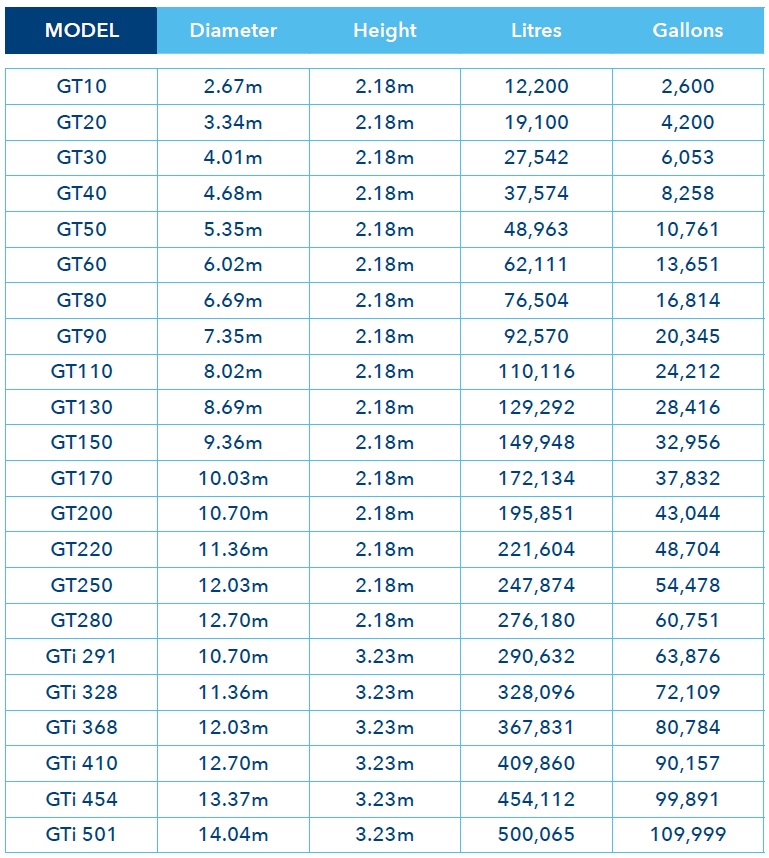
Rainwater is a significant natural resource that has been gathered by Australian homes for domestic use ever since colonial times.
Opportunities for rainwater accumulation and use can vary with location. Urban households commonly have a hookup to a reticulated, treated (mains) water supply but can significantly reduce mains water utilisation by implementing a rainwater harvesting system.
Home harvested water is commonly utilised for drinking water, general household water usage purposes, as well as satisfying irrigation requirements.
Many rural households sometimes need to resource all their water on their property, and rainwater typically offers a more desirable quality household supply than river, bore or dam water.
Making use of rainwater can reduce water expenses, deliver an alternate supply during water restrictions and aid maintain a green, healthy garden.
At times of the year where there are water restrictions, rainwater tanks can be a savior.
You can employ your rainwater to water your shrubs and landscape and keep them flourishing through the dry months, take lengthier showers and do as many loads of washing as you need.
Obviously if water is scarce you still would like to bear in mind how much water you are making use of but possessing the water tank will denote you don’t have to comply with water usage limited by council guidelines.
Your freely produced rainwater can supply your dishwasher and washing machine, be made use of to wash your motor vehicle and windows, water your yard and clean the house. This signifies you won’t be clocking up the litres on your water meter and as a result your water costs!
Some people prefer to make use of rainwater for reasons related to health or personal preference. As an example, some individuals choose to consume fresh water free from the added chemicals that are used to treat mains supplied water. Others dwell in locations where the mains water is salty, “hard”, includes heavy metals or has an uncomfortable odour, making rainwater an enticing choice.
Rain Harvesting and the use of rainwater around your home can also provide benefits for the environment. By harvesting the rain that lands on your roof, you can reduce the consequences of stormwater runoff in your location, which can typically harm creeks and other water habitats.


Since 1988, Pioneer Water Tanks has supplied Australians with water tanks for domestic, farming, fire fighting and industrial applications.

When deciding on a rainwater tank size it is very important to take into account the average annual rainfall in your location, the water collection area (ie roof size) of your household and your estimated water consumption.
Additionally, you should think about the planning, plumbing and public health guidelines in your area. If you are unclear of these requirements, you should get in touch with your local council.
Multiplying your average annual rainfall (in millimetres) with the dimensions of your roof surface area (in square metres), will give you your approximate annual rain harvesting volume. As an example if your yearly rainfall was 500mm and your roof area was 300 square metres, you could expect to accumulate 150,000 litres annually.
Pioneer Water Tanks are offered in a variety of sizes to achieve your water storage goals.
The Litres/Gallons stated in the table are gross capacities.
Actual useable volume will vary depending on the size and position of inlets and outlets.

MODEL | Diameter | Height | Litres | Gallons |
|---|---|---|---|---|
GT10 | 2.67m | 2.18m | 12,200 | 2,600 |
GT20 | 3.34m | 2.18m | 19,100 | 4,200 |
GT30 | 4.01m | 2.18m | 27,542 | 6,053 |
GT40 | 4.68m | 2.18m | 37,574 | 8,258 |
GT50 | 5.35m | 2.18m | 48,963 | 10,761 |
GT60 | 6.02m | 2.18m | 62,111 | 13,651 |
GT80 | 6.69m | 2.18m | 76,504 | 16,814 |
GT90 | 7.35m | 2.18m | 92,570 | 20,345 |
GT110 | 8.02m | 2.18m | 110,116 | 24,212 |
GT130 | 8.69m | 2.18m | 129,292 | 28,416 |
GT150 | 9.36m | 2.18m | 149,948 | 32,956 |
GT170 | 10.03m | 2.18m | 172,134 | 37,832 |
GT200 | 10.70m | 2.18m | 195,851 | 43,044 |
GT220 | 11.36m | 2.18m | 221,604 | 48,704 |
GT250 | 12.03m | 2.18m | 247,874 | 54,478 |
GT280 | 12.70m | 2.18m | 276,180 | 60,751 |
GTi291 | 10.70m | 3.23m | 290,632 | 63,876 |
GTi328 | 11.36m | 3.23m | 328,096 | 72,109 |
GTi328 | 12.03m | 3.23m | 367,831 | 80,784 |
GTi410 | 12.70m | 3.23m | 409,860 | 90,157 |
GTi454 | 13.37m | 3.23m | 454,112 | 99,891 |
GTi501 | 14.04m | 3.23m | 500,065 | 500,065 |

We consider that the average rural property uses about 30 000L of water per person, yearly, and if you’re relying on that alone, a rainwater tank that exceeds this figure would be sufficient. This usage figure will vary depending upon your personal water usage choices.
To work out how much rainwater you can harvest from the roof of your home (catchment area) use the simple calculator attached.
Once you take note of how much water is accessible to harvest, and just how much water you expect to consume every year, you will have a solid base to decide what water tank size is ideal for you.
Remember it is more desirable to have more water and not need to have it, than need more water and not have it.

Generally speaking, for water storage, a polyethylene water tank (or more commonly known as a slimline tank) is a better option than a steel water tank pertaining to the lower volume sized rainwater tank range. The reason for this is that polyethylene (a food grade plastic) is light and is also reasonably less expensive to make.
A different key point where a poly rainwater tank may be of superior value is in relationship to footprint size. If the area you have identified to place your water tank is restricted by way of access, or footprint size, there are a handful of assorted poly water tank options that may be well served. The three most preferred types of poly water tanks are slimline water tanks, round poly water tanks, and round squat poly water tanks.
Slimline rainwater tanks are appropriate for suburban properties that have space restraints. The selections of length within the slimline water tank range is ideal to fit in between windows and in small spaces, so as not to lessen household aesthetics.
Whilst the slimline water tank can be long and thin, you can also utilise a round poly water tank. The smaller diameter poly tank could be useful in tight areas, and could be easily moved to different areas if the need comes up.
The squat polyethylene rain water tank is very helpful in places where there is a low roof line or where the tank would need to suit on a stand and still be beneath the eaves of the roof. By design, it is a round, squat tank that will permit you to accumulate the water you need, without using up a lot of space.

Whether you go with a multiple water tanks system or choose one single steel tank may be based on a range of factors such as:
If you are looking to hold and store water underground (ie an underground water tank), a concrete tank may be the best option for you. Whilst Pioneer only manufacture a large steel round water tank option, your local dealer may be able to assist with advice relating to an underground tank.

The price of water tanks become cheaper on a cents per litre basis as rain water tank sizes increase. The restricting aspect of the poly water tank is the individual tank size volume.
Lets use the illustration of catching and storing 60kl of captured water. With the poly water tank choice, you would likely need 2 x 30kl poly tanks for adequate water storage.
This option would set you back roughly $8400, at a price of 14 cents per litre. For around that same price if you bought a steel water tank with a volume of 110,000 litres you would be paying 7.2 cents per litre.
It’s fair to say that when you are aiming to capture and store rainwater in excess of 30kl, then a steel rain water tank might be the better choice for you.
A feat of engineering excellence, the Pioneer V-LOCK® wall profile is designed to stand the test of time and provides superior internal support for the tank liner.
The AQUALINER Fresh® antimicrobial tank liner is designed keep your water fresher, cleaner and healthier for longer.
You will consistently do business exclusively with our Pioneer direct local dealer network regardless of your location. That being said all of our Pioneer Steel Water Tanks are manufactured in Perth, Western Australia.
This has the effect of prices being different from state to state as a result of differing freight costs.
If your rain water tank is going to be installed within 100km of your local dealer, then there is no extra cost to install your tank (no travel charge).
If your installation falls outside of this range, then a travel cost may apply.


At Pioneer, we’ve been designing and manufacturing rural water tanks for over 30 years, and we’re so confident in their durability that all of our tanks come with our exclusive Pioneer 20/20 warranty.

That means a 20-year conditional structural warranty, in addition to a 20-year conditional warranty gainst water leakage (only applicable for tank models GT10—GT280.)

With Pioneer’s Dealer Direct® Network of over 50 distributors all across the country, you can rest assured that you will be dealing with the knowledge and experience of a local family business.
Whether your water tank is for your home farm or holiday property, it needs to be in keeping with your personal aesthetic, Pioneer Water Tanks has a range of colours and additional features to choose from.